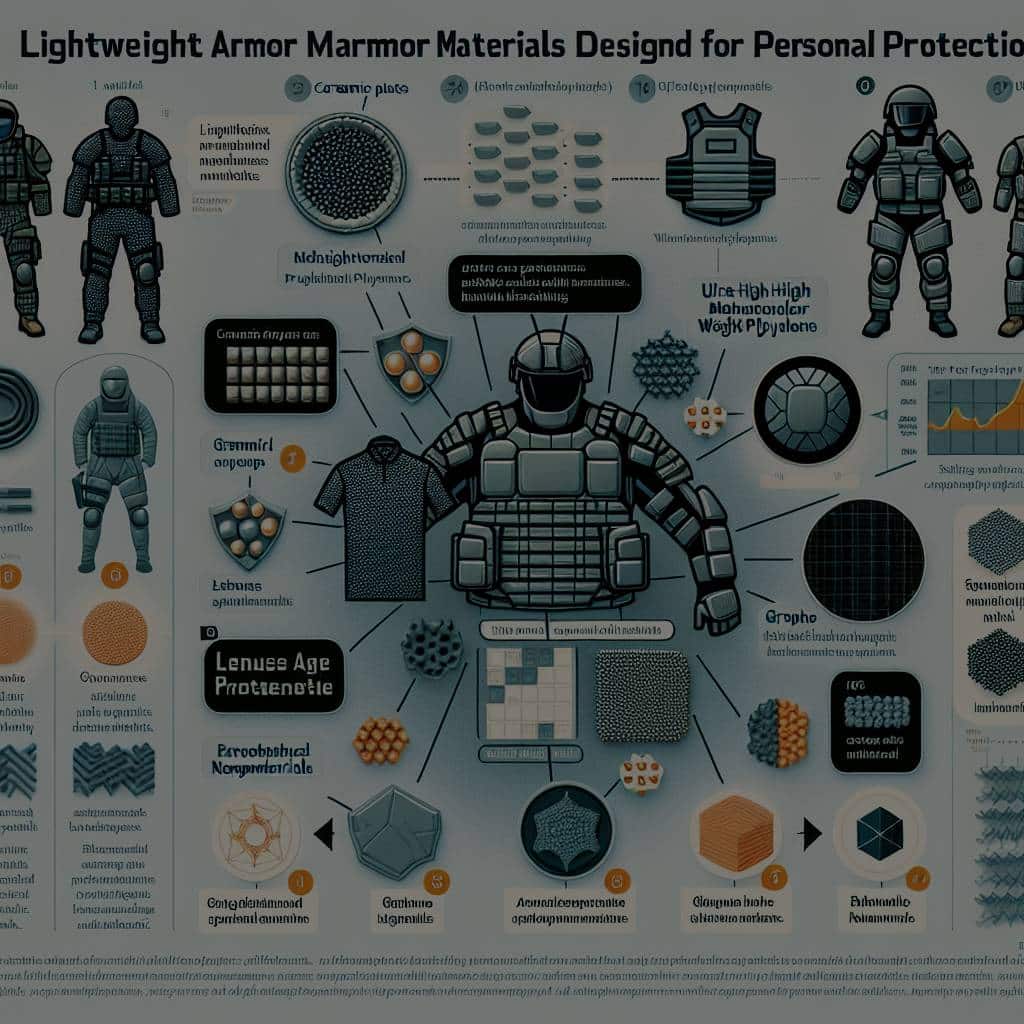In the ever-evolving world of protective armors, the pursuit of lighter, more effective materials is a constant theme. The goal is to maximize protection while minimizing the burden on the wearer, allowing for greater mobility and endurance. The body armor market has seen significant growth over the years, thanks to the increasing demand from the military, police, and private security sectors. This article delves into the recent advancements in lightweight armor materials, focusing on the high technology systems that are shaping the future of personal protection.
The Importance of Lightweight Armor
The effectiveness of any armor system relies on its ability to provide protection against various threats. However, weight plays a crucial role in the practicality of the armor. The lighter the armor, the less it hinders the wearer’s mobility, thus improving their performance in high-intensity situations.
In parallel : Will Personal Air Purification Devices Become a Standard for Urban Commuters?
Lightweight plates have become a standard in advanced armor systems. The demand for these plates has been driven by the military and law enforcement agencies, who require gear that offers superior protection without slowing down their personnel. The growth in the market is propelled by ongoing research and development efforts aimed at discovering new materials and refining existing ones.
Advanced Ballistic Materials: From Ceramics to Composites
One of the major advances in lightweight armor materials comes in the form of advanced ballistic materials. Traditionally, steel has been used in armor systems due to its superior strength and durability. However, steel is heavy, and its use in armor plates can significantly weigh down the wearer.
This might interest you : The ethical challenges posed by chatbots
Ceramic materials have emerged as a viable alternative due to their lightweight properties and ballistic resistance. When a projectile hits a ceramic plate, the impact energy is dispersed across a wider area, reducing the chance of penetration.
Beyond ceramics, composite materials are also taking center stage. These consist of two or more materials combined to deliver a balance between weight and protection. Examples include Kevlar-reinforced ceramics and metal matrix composites, which offer high ballistic resistance while keeping the weight low.
Ceramics: A High-Tech Solution
The role of ceramics in armor systems is growing significantly. Ceramics, such as boron carbide and silicon carbide, offer a unique combination of hardness, lightness, and ability to absorb and dissipate impact energy, making them an ideal choice for body armor.
Boron carbide, for instance, is one of the hardest known materials, only second to diamond. Despite its hardness, it’s incredibly lightweight, making it a popular choice for personal armor systems. Silicon carbide, on the other hand, offers high thermal conductivity, which allows for better heat dissipation upon impact.
The use of these advanced ceramics in armor plates is enhancing the capabilities of personal protection gear, enabling the wearer to withstand higher threat levels without being bogged down by the weight of the armor.
The Role of Technology in Armor Development
The development of lightweight armor materials isn’t just about discovering new materials. It also involves leveraging technology to refine the manufacturing processes and enhance the properties of existing materials.
One such technology is additive manufacturing or 3D printing. This technology allows for the production of armor components with complex geometries and designs, which can enhance the ballistic performance of the armor. Moreover, 3D printing enables the production of armor on-demand, which can be a game-changer in terms of logistics and cost-effectiveness.
Another technology shaping the future of armor materials is nanotechnology. By manipulating materials at the nanoscale, scientists can enhance their properties, such as hardness, toughness, and ballistic resistance. This technology holds great promise for the development of next-generation lightweight armor materials.
The Future of Lightweight Armor Materials
As the need for lightweight, high-protection armor continues to grow, the industry is expected to witness a surge in innovations. The future of armor materials will be shaped by the development of new materials and the refinement of existing ones through advanced technologies.
Expect to see more use of materials such as graphene, which is ultra-lightweight yet incredibly strong. Moreover, the emergence of smart materials, which can alter their properties in response to changes in their environment, could revolutionize the way armor systems are designed.
The journey towards the development of advanced lightweight armor materials is an ongoing one, filled with challenges and opportunities. However, the potential benefits – enhanced protection, improved mobility, and increased comfort for the wearer – make it a journey worth pursuing.
The Growth of Armor Materials Market and Its Role in Army Applications
The armor materials market is expanding rapidly, reflecting the growing need for modern, lightweight protective solutions, particularly in army applications. The global armor materials market is projected to reach USD 15.95 Billion by 2024, a growth propelled by various factors including increasing security concerns, technological advancements, and higher defense budgets.
The use of lightweight armor is particularly important in military settings. The improved mobility and endurance that this armor provides can be critical in high-risk scenarios, enabling soldiers to move more swiftly and withstand longer periods of physical exertion. This, in turn, can improve overall mission effectiveness.
Materials like ceramics and composites, as previously discussed, play a significant role in the development of lightweight armor for military use. Soldiers on the battlefield often face threats like high-velocity bullets and explosive devices. Therefore, armor that can efficiently dissipate impact energy, like ceramic-based armor, can provide lifesaving protection.
It’s worth highlighting the work of the Washington National Council and the National Academies in advocating for the advancement of armor materials science. Through their research, they are driving the development of new materials and technologies that could redefine the future of personal protection.
The Future: Opportunities for Protection and Technological Advancements
Looking to the future, the opportunities for protection are vast and filled with exciting technological prospects. The continued advancements in materials science and technology promise to revolutionize the personal protective equipment industry, particularly in the realm of lightweight armor systems.
One of the key technologies that could shape the future of armor systems is nanotechnology. This cutting-edge technology, which involves manipulating materials at the nanoscale, opens up possibilities for enhancing the properties of armor materials. This includes increasing their hardness, toughness, and ballistic resistance, which could significantly boost the protection levels they offer.
Graphene is another material that could play a crucial role in the evolution of armor materials. Known as the world’s strongest material, it is extremely lightweight and has excellent energy absorption capabilities. Its potential application in armor systems could lead to the development of even lighter, more effective armor.
Finally, the emergence of smart materials could revolutionize the way armor systems are designed. These materials can change their properties in response to changes in their environment. For instance, they could potentially harden upon impact, providing superior protection.
In conclusion, while the journey to develop advanced lightweight armor materials is filled with challenges, it is also abundant with opportunities. With the continuous advancements in materials technology, the future of personal protection looks promising. The potential benefits of enhanced protection, improved mobility, and increased comfort make it a journey worth continuing, driven by the relentless pursuit of better, lighter, and stronger armor materials.











